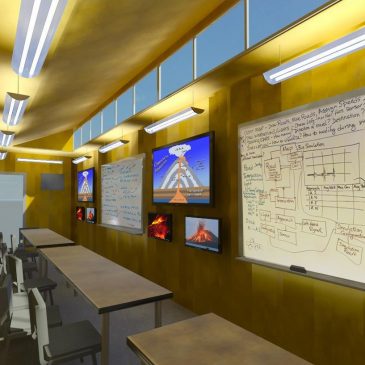Models for Arts Integration
There are many models for the use of the arts, and specifically, arts integration in public schools. Arts integration is the use of dance, music, drama and visual arts to help students learn more effectively. The arts don’t need to be justified by their potential improvement of student learning, but the very engagement that most students feel when doing art makes arts integration a potentially powerful strategy in school improvement. Our most recent study measure the effect of arts integration on student achievement and finds improved student acquisition of academic skill sets, 40% improvement on standardized tests and improved teaching practice (Southworth et. al., 2015).
Some of the arts integration models around the country include The Minneapolis Public Schools Arts for Academic Achievement program where the idea of models for arts integration was first investigated (Ingram et. al., 2007). The Minneapolis Public Schools Arts for Academic Achievement program joins the Ford Foundation’s Arts Education Initiative, a broad-based coalition that includes organizations from Oakland; Baltimore; Jackson, Mississippi; St. Louis; Cleveland; Dallas, and Washington, D.C. Minneapolis joins North Carolina’s A+ Schools, Chicago Arts Partnership in Education, the New York State Council on the Arts, the Arts in Education Model Demonstration and Dissemination research and the Kennedy Center as exemplary models for arts integration. Each of these models shares some of these characteristics:
“Ingram and Seashore (Ingram) in their Summative Evaluation of the Arts for Academic Achievement (AAA) four-year initiative in Minneapolis described five models for implementing arts integration that they observed in the 31 participating schools: “1) Residency Model; 2) Elaborated Residency Model; 3) Capacity Building Model; 4) Co-Teaching Model; and 5) Concepts Across the Curriculum Model” (p. 3). These five models, though not characterized as a strict continuum, could represent a progression of implementation approaches with increasing engagement and participation from within the school and across the content disciplines as participants become more comfortable and familiar with integration” (Burnaford et al., 2007).
As the field of arts integration evolves, so do the models for arts integration and their use—from basic residency models currently used all over the United States—to full integration of concepts across the curriculum that approaches interdisciplinary work at its finest. The latest news from Finland is the formal adoption of all disciplinary work in K-12 schools where students work in groups and where subjects such as Math and ELA are resources but not drivers of the work. So this model evolution can only end with more questions than logical answers. Where is the best evidence for the use of arts in education, to what ends and purposes shall the introduction of arts education be realized, and can arts integration models embody the competing priorities for arts education funding. How will the validity of an arts experience translate into a model that makes a reliable difference to all of us in K-12 schools? How can that be collected as evidence of student learning with reliability measures in an effective way? Can the field reconcile the need for assessments that measure student outcomes based on competing priority objectives? Finally, can we celebrate the power of arts experiences and harness that power for use in schools? As these evolving models hopefully demonstrate, the work continues to grow, and the research priorities are getting more rigorous in explaining the effects of arts integration on student learning.
Burnaford, G., Brown, S., Doherty, J., & McLaughlin, H. J. (2007). Arts Integration Frameworks, Research & Practice: A Literature Review. Washington, DC: Arts Education Partnership.
Ingram, D., Toft, J., Cox, B. . (2003). Adapted from Freeman, C., Seashore, K.R., Werner, L. (2003). “Models of implementing Arts for Academic Achievement: Challenging contemporary classroom practice.”. The Minneapolis Public Schools’ Challenge Grant from the Annenberg Foundation: Center for Applied Research and Educational Improvement, University of Minnesota.
Southworth, R., Gardiner, M., & Westervelt, N. (2015, in press). Measuring the effects of arts integration on student achievement; Four year report; Rochester City School District. New York: The SchoolWorks Lab, Inc.




